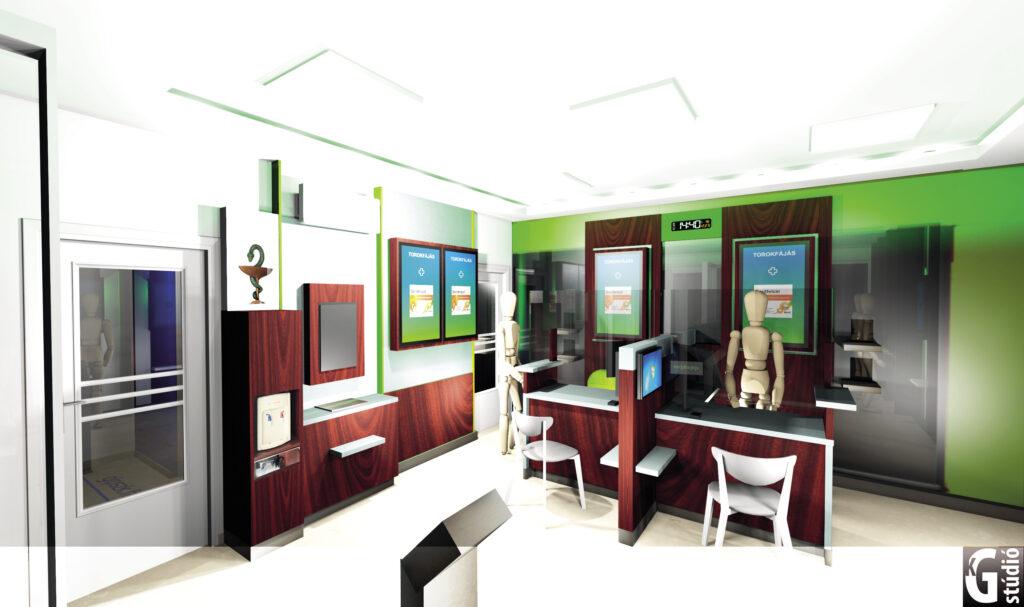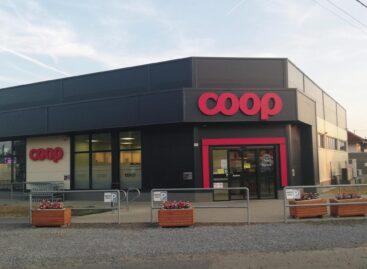Rapid digitalisation in pharmacies
This article is available for reading in Trade magazin 2024/5
This is what impatient customers dream about

Dr. Vámossy István
ügyvezető
Gollmann Magyarország/
Pharmamatrix
Dr István Vámossy, general manager of Gollmann Magyarország/Pharmamatrix Kft. believes that digitalisation and automation free up time and human resources, which can greatly increase the efficiency and sustainability of a pharmacy or pharmaceutical distribution business.
“Pharmacy professionals have been facing a growing administrative burden and time pressure for years. We believe that pharmacy robotisation can offer a solution to this problem”,
he underlines. Gollmann Magyarország is committed to the cause of digitalising pharmacies. Currently 17 Hungarian pharmacies are using Gollmann robots.

Digitalisation and automation unlock significant time and human resource capacity

Dr. Gábor Nagy
managing director
Pharma Cloud
Dr Gábor Nagy, managing director of Pharma Cloud Kft. thinks pharmacy workers are under great pressure due to staff shortage increasing competition, and the emergence of new therapeutic options.
“We are trying to find solutions that will increase the profitability of pharmacies and/or reduce the time they have to spend with a given task. We have two such services at the moment, one is a pricing assistance service and the other is a self-service checkout system. The former can already be found in more than 180 pharmacies and the first self-checkout is now up and running in the Natura Pharmacy in Tököl”.
A complex solution
Off the shelf products and the growing product selection in pharmacies have created the need for commercial IT solutions, where digitisation has been in focus for quite a while.

Dávid Szabó
CEO
Szintézis
“There has been a transformation of pharmacies internationally: in addition to maintaining and developing the core business, commercial activity has also become important”,
points out Dávid Szabó, CEO of Szintézis Informatikai Zrt. He also reveals that they offer Pricer electronic shelf labels and self-checkout systems to pharmacies. For ten years now they have been present in more than 500 pharmacies with their technological solutions.

Dániel Hosszú
managing director
H&H Innovation
Dániel Hosszú, managing director of H&H Innovation Kft. calls attention to the growing demand for digital solutions in Hungary, both on the seller and the buyer side. The realisation of ideas and concepts is limited by the capital available for investment.
“Many pharmacies reckon that this isn’t a profitable step for them, they don’t see the longer-term return. Bigger pharmacy chains are trying the new solutions, but we believe there are still many new opportunities in this market. The ATPS concept reflects this: once the offline and online versions are fully developed, we will have a unique, complex solution in the market that stands its ground both professionally and technologically”,
says Dániel Hosszú.

Realisation of ideas and visions is only limited by the capital available for investment
Digital planogram and so much more
Pharmacies have been loyal to traditional POS tools for a relatively long time, but over time, as market trends have moved towards digitalisation, they have realised the huge potential in going digital.
“For example a digital planogram can display many more products in the same area in a more transparent way than traditional shelves. Not to mention the fact that extra information can also be displayed on it, which is important for the patient and can also help the expeditor”,
says Balázs Hegyi, CEO of Medirobot.
The company’s flagship product is RowaTM Vmotion, which modernises the traditional planogram and makes lots of extra content and information available to patients and staff.

Whatever has been working well in other areas of retail also appears in pharmacies
Novodata Zrt.-LX-Line Kft. offers electronic laboratory logbook keeping and the use of secondary displays to facilitate patient collaboration. Their portfolio also includes an android-based digital inventory and goods receiving device. Their pharmacy systems are capable of eSzámla electronic invoice management and smart ordering. They have approximately 1,800 customers.

Dr. Anett Szepesi-Palik
pharmaceutical manager
Enelis
“By freeing up pharmacist time, they can spend more time with customers and thanks to the technology there is a smaller probability of human error”,
says Dr Anett Szepesi-Palik, pharmaceutical manager of Enelis. This year they are launching their AI-powered next generation pharmacy system, Enelis Pharmacy. //

Pharmacy systems are fast, accurate and convenient – making life easier for both pharmacists and patients
//
A repository of modern devices

Dr. Anita Sike
managing director
Siker-Pharma
Dr Anita Sike, managing director of Siker-Pharma Kft. says that in recent years they have tried to make digital tools and systems – which are still new in pharmacies but have already proven themselves in other areas of retail – part of everyday life.
“The first step was the creation of off the shelf shopping sections in pharmacies, where the maintenance and display of nearly 2,500 products was impossible to do manually. Paper labels were replaced with Pricer electronic shelf labels”,
explains Dr Anita Sike.
As part of the modernisation and automation of the pharmacy processes, they installed medicine vending machines. One of their most innovative projects is implemented in Natura Pharmacy in Tököl: Pharma Smart SelfCheckOut, an automated smart checkout for products purchased off the shelves. This system was introduced one and a half years ago, in collaboration with Szintézis Informatikai Zrt., NCR Magyarország Kft. and Pharma Cloud Kft. //
Personal contact and trust remain important

Dr. András Kóró
managing director
Evol-Pharma
Evol-Pharma Kft.’s biggest digital tool is the ROWA order picking robot.
“ROWA makes pharmacy work really accurate and simple, always putting the right medicine with the right expiry date in the expeditor’s hands. We have two online shops where you can order from us, and one of our pharmacies is also accessible through the Foodora app”,
says Dr András Kóró, managing director of Evol-Pharma Kft.
In his view digitalisation and accelerated life will surely lead to more innovative solutions in the near future, but what will always be needed is personal contact and trust: the pharmacist, who helps with advice at the counter, explores the problem and offers a solution. //
Moderate digitalisation

Dr. Levente István Harmatha
CEO
Sipo Patikák
Dr Levente István Harmatha, CEO of Sipo Pharmacies recalls that pharmacies were among the first to digitalise in the retail sector.
“Few pharmacists go digital voluntarily. We are considered innovative, but we aren’t tech geeks. We won’t have an automated warehouse system or a digital product shelf under my management. Complete or total digitalisation isn’t something we want to do”,
reveals the CEO.
He adds that their pharmacy was the first in the country to introduce a self-checkout, which can be used to pay for over-the-counter medicines, and they were also the first to start operating an online pharmacy. The company will soon start testing digital shelf labels. //
No unnecessary administration
For the management of Somfa Pharmacy in Budapest, it became clear as early as 2021 that it was essential to improve workflows. The digitalisation and optimisation of the dispensing of medicines is an inevitable direction.

Dr. Lajos Potornai
head of pharmacy
Somfa Gyógyszertár
“The reason for this is that the daily routine tasks associated with selling medicines have become far removed from the real professional work, which hinders the job of highly qualified professionals in pharmacist-patient encounters. Recognising this motivated me to create my ATPS concept, based on which we have digitalised and optimised the medicine dispensing processes at Somfa Pharmacy”,
says Dr Lajos Potornai, head of pharmacy at Somfa Pharmacy.
They use a warehouse robot (Gollmann robot, Pharmamatrix Kft.) that takes care of the professional storage of products. //
Faster shopping process

Dr. Kresznovszki
Miklós
vezető
Szent Borbála
Gyógyszertár
In the Szent Borbála Pharmacy shelves full of OTC medicines and other products are displayed on huge (5x2m) LED walls. In front of the LED walls there are 4 kiosks that patients can use to create their virtual shopping baskets. They can find out about the price, stock, image and description of the products before they buy. A receipt with a barcode identifier is printed with the contents of the assembled basket, which the patient can use to pick up the products.
“With the introduction of digitalisation, patients had to learn how to use the kiosks, but thanks to their simple design, customers quickly got used to them. Patients who use the kiosk benefit from faster service. This way a patient who only buys products without a prescription doesn’t have to wait in line”,
explains Dr Miklós Kresznovszki, head of pharmacy at Szent Borbála Pharmacy. //
We search for medicine online, but don’t do the same for a diagnosis
According to a survey of online shoppers by GKID for Publicis Groupe Hungary, which interviewed more than 5,000 people in February 2024, the purchasing decisions of patients are based on three main criteria: 54% put previous experience first, 49% follow the recommendation of the pharmacist, and 39% consider the price of the product as the most important factor. Although patients are increasingly turning to online search engines, they are still much more likely to use the internet to buy non-prescription medicines than to self-diagnose. Most customers, 93% of respondents say traditional pharmacies are their primary source of medicine. One of the most important criteria when choosing a pharmacy is to be easily accessible from home or the workplace – 67% named this as a priority. Only 10% choose a pharmacy based on prices or promotions. //
Related news
László Pekó: “Coop isn’t just a network, it is a way of life – and has been for 30 years”
🎧 Hallgasd a cikket: Lejátszás Szünet Folytatás Leállítás Nyelv: Auto…
Read more >GVH President: digitalization is transforming competition and consumer protection law
🎧 Hallgasd a cikket: Lejátszás Szünet Folytatás Leállítás Nyelv: Auto…
Read more >Digital development
🎧 Hallgasd a cikket: Lejátszás Szünet Folytatás Leállítás Nyelv: Auto…
Read more >Related news
KSH: industrial producer prices in November 2025 were on average 2.7 percent lower than a year earlier and 0.3 percent lower than the previous month’s prices
🎧 Hallgasd a cikket: Lejátszás Szünet Folytatás Leállítás Nyelv: Auto…
Read more >Employment at 4.5-year low
🎧 Hallgasd a cikket: Lejátszás Szünet Folytatás Leállítás Nyelv: Auto…
Read more >This is how we eat honey in 2026
🎧 Hallgasd a cikket: Lejátszás Szünet Folytatás Leállítás Nyelv: Auto…
Read more >







